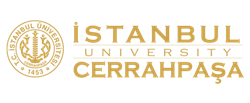AIM: This study aimed to assess the effect of using electronic software for nursing documentation on students.
METHOD: A quasi-experimental study was performed. The study population comprised 80 nursing students who were randomly divided into 2 groups. The software used for nursing documentation was designed according to the nursing process model. Students in the experimental group received theoretical and practical training. The control group attended a 1-day course on the nursing process model. A questionnaire was used to assess student satisfaction in nursing documentation. The data were analyzed using the Statistical Package for Social Sciences software 16 (Chicago, USA). The standard and comprehensiveness of documentation were analyzed using the summative content analysis with the MaxQDA 10 software (USA). TREND statement was followed for reporting.
RESULTS: The analysis showed that the mean scores of satisfaction in both groups increased significantly (p < .05). Furthermore, the result of the summative content analysis showed that the comprehensiveness and the standard of nursing documentation increased significantly in the experimental group (p < .05).
CONCLUSION: The findings confirmed the usefulness of electronic software in improving the standard and comprehensiveness of nursing documentation and the students’ satisfaction.
Cite this article as: Ranjbar, K., Sarvestani, R. S., Oghlaee, H., Sarvestani, P. S., Dehghan, A., & Shirazi, Z. H. (2021). Using electronic software for nursing documentation in nursing students. Florence Nightingale J Nurs, 29(2), 128-136.




.png)
.png)